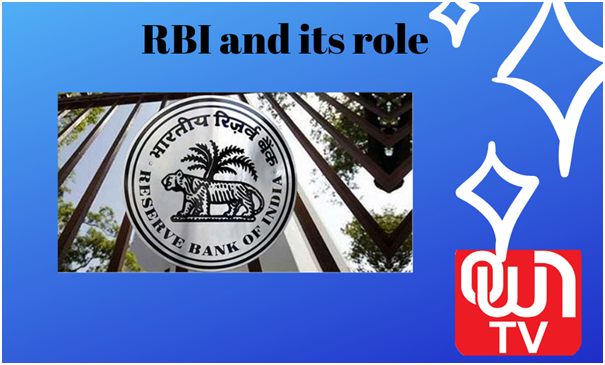RBI AND ITS ROLE IN INDIA: SSC 2019
Important facts you need to know about RBI and its Role

Reserve bank of India is the centre of all banks and it is the apex bank of India. It is responsible for the supply and circulation of the money It commenced its operation on 1 April 1935. Following independence, RBI was nationalised in 1949. Today, we will understand about RBI & its role.
The RBI is headquartered with 21 Directors, Governor, Four deputy governors, ten government nominated directors and four directors to headquarter local boards in metropolitan cities (Kolkatta, Mumbai, Chennai and New Delhi).
It is an apex monetary authority responsible for the storage of foreign exchange the report, control of inflation(value of money) and monetary policy report until August 2016.
STRUCTURE
The director is appointed for four years. Currently, Governor of RBI is Shaktikanta Das and deputy governors are BP Kanungo, N.S. Vishwanathan, Vichal Acharya and Mahesh Kumar Jain.
Two of the four deputy governors are traditionally from RBI ranks and are selected from the bank’s executive directors. One is nominated from among the Chairpersons of public sector banks and the other is an economist.
FUNCTIONS
The preamble of RBI describes RBI’s functions in the given exact words:
The main is to regulate the issue of banknotes and keeping the reserves with a view to securing monetary stability in India and generally to operate the currency and credit system of the country to its advantage.
Important functions discussed are:
- Financial supervision: The board of directors are required to meet once a month and functions are to keep the stability of statutory and internal audit functions of banks spread across all over.
- Regulator and supervision of the financial system: The RBI control monetary supply keeps checking on GDP(gross domestic product) and the circulation of money and decides the design of rupee notes and coins
- Regulator and supervisor of the payment and settlement systems: There are two settlement schemes NEFT(national electronic fund transfer) and RTGS(real-time gross settlement). NEFT settles transactions in batches and RTGS in hourly batches until a particular cut off time and RTGS transactions are processed continuously
- Banker and debt manager to government: Like banks government also needs money to carry out operations. It is the responsibility of RBI
- Managing foreign exchange: RBI manages foreign exchange markets and keeps relations. It manages forex and gold reserves of the nation.
A. Issue of currency: It issues banknotes
B. Banker’s banks: RBI maintains all schedules of commercial banks
C. Development role: RBI helps in providing aids for education, agriculture and micro, and small enterprises.
2016 DEMONITISATION
On 8 November 2016 RBI and govt of India demonetized the Rs500 and Rs1000 notes. And the Rs 500 and Rs 2000 notes were printed with new Mahatma Gandhi series and Rs 100 with the preceding series.
POLICY RATE AND RESERVE RATIOS
Repo rate is the rate at which RBI lends money to small banks for a period of 90 days.
Reverse repo rate is the rate at which RBI borrows from small banks.
Cash reserve ratio: it is the ratio of cash reserves of banks to RBI
Statutory liquidity ratio: it is liquid securities kept as gold, cash and reserves.
